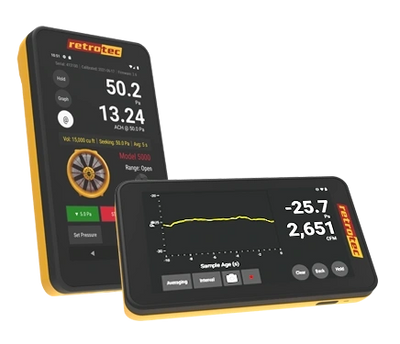Residential Blower Door Testing
Essential for Washington State Energy Code Compliance
According to the latest Washington State Energy Code Requirements, blower door testing for air leakage has become a mandatory step for both new construction and numerous remodeling projects. WA Blower Door is your trusted partner in meeting these stringent code and inspection requirements. With our extensive experience and expertise in navigating Washington state building codes, we ensure seamless compliance with the latest regulations.

GIVE US A CALL
SUBMIT PROJECT INFO
SCHEDULE A TEST
SCHEDULE A TEST
SUBMIT PROJECT INFO
SCHEDULE A TEST
SUBMIT PROJECT INFO
SUBMIT PROJECT INFO
SUBMIT PROJECT INFO
WHAT'S INCLUDED IN A BLOWER DOOR TEST?

Initial Consultation:
Before the test, our team will discuss the process with you and address any questions or concerns you may have. We'll also gather relevant information about your property, such as its size, layout, and construction details.
Preparation:
We'll review your building plans to calculate the square footage and building volume accurately. This step ensures that the test results reflect the specific characteristics of your property.
Blower Door Setup:
Our technicians will install a specialized fan, known as a blower door, in an exterior doorway of your building. This fan is equipped with sensors to measure air pressure differentials and airflow rates.
Testing Procedure:
Once the blower door is set up, we'll gradually increase the fan speed to depressurize the building. This process creates a pressure difference between the inside and outside of the building, allowing us to measure the air leakage rate.
Air Leakage Measurement:
Using precision instruments, we'll measure the amount of air leaking into or out of your building at various pressure levels. This data is crucial for calculating the air changes per hour (ACH) and determining the building's overall air tightness.
Data Analysis:
Our team will analyze the test results to assess the extent of air leakage and identify potential areas of concern. We'll provide you with detailed insights into the performance of your building envelope and recommendations for improvement.
Documentation:
We'll record the test results and provide you with written documentation for your records. This documentation may include the calculated ACH value, graphical representations of the air leakage rate, and any pertinent notes from the testing process.
Post-Test Consultation:
After completing the test, we'll review the results with you and answer any additional questions you may have. We'll also discuss strategies for addressing air leakage issues and improving the energy efficiency of your building.
PREPARING FOR YOUR BLOWER DOOR TEST
To ensure a smooth and successful blower door test, there are a few essential steps to follow.
Provide Necessary Information: Before the test, be prepared to provide our team with essential information about your property, including its address (including cross streets if necessary), builder details, superintendent contact information, and any access codes required to enter the premises.
Have Plans On Site: It's helpful to have building plans available on-site for reference during the test. These plans can assist our team in accurately calculating square footage and building volume.
Ensure Building Readiness: Prior to the scheduled test date, ensure that your building is ready for testing by completing the following checklists:
- Are all windows installed? Ensure that all windows in your building are installed and properly sealed.
- Are all exterior doors and door hardware installed? Make sure that all exterior doors are in place and that door hardware (such as handles and locks) is installed.
- Are all crawl space and attic hatches finished with appropriate hardware? Check that crawl space and attic hatches are securely closed and properly sealed to prevent air leakage.
- Are all combustion equipment installed with complete venting? If your property includes combustion equipment (such as furnaces or water heaters), ensure that they are installed correctly and have complete venting systems in place.
- Are all exhaust fans installed with complete venting? Verify that any exhaust fans in your building are properly installed and vented to the outside.

WA Energy Code Blower Door Printable Checklist
- Filled out WA Blower Door Contact Us Form
- Plans on Site
- Power outlets operational
- Attic hatch cover installed
- Weather stripping installed
- All flooring installed
- All interior wall penetrations (electrical outlets, switches, etc) covered
- Fireplace damper installed, operational and closed
- Clothes drier vent backdraft damper operational (if drier not installed)
- Vented range hood fully installed
- Exterior door hardware installed
- Paint dry on exterior doors
- All exterior doors including sliders can be closed and latched
- All windows can be closed and latched, none broken
- All extraction fans installed and operational
- All HVAC supply and return registers installed
- HVAC air handler fully installed (need not be “started up”)
- Fill all plumbing P Traps with water
This website uses cookies.
We use cookies to analyze website traffic and optimize your website experience. By accepting our use of cookies, your data will be aggregated with all other user data.